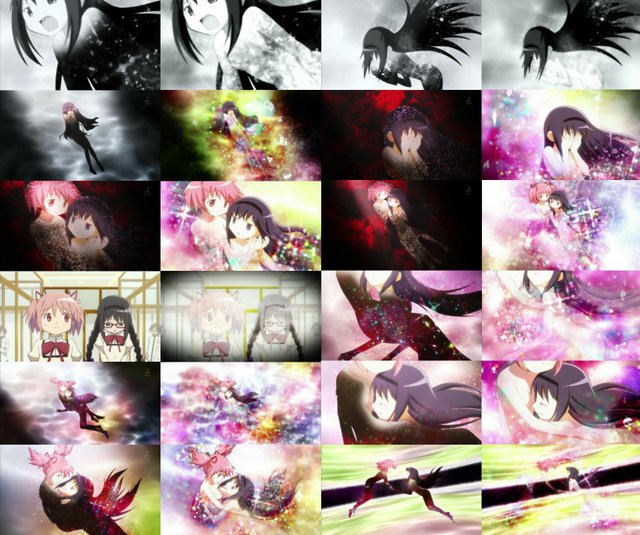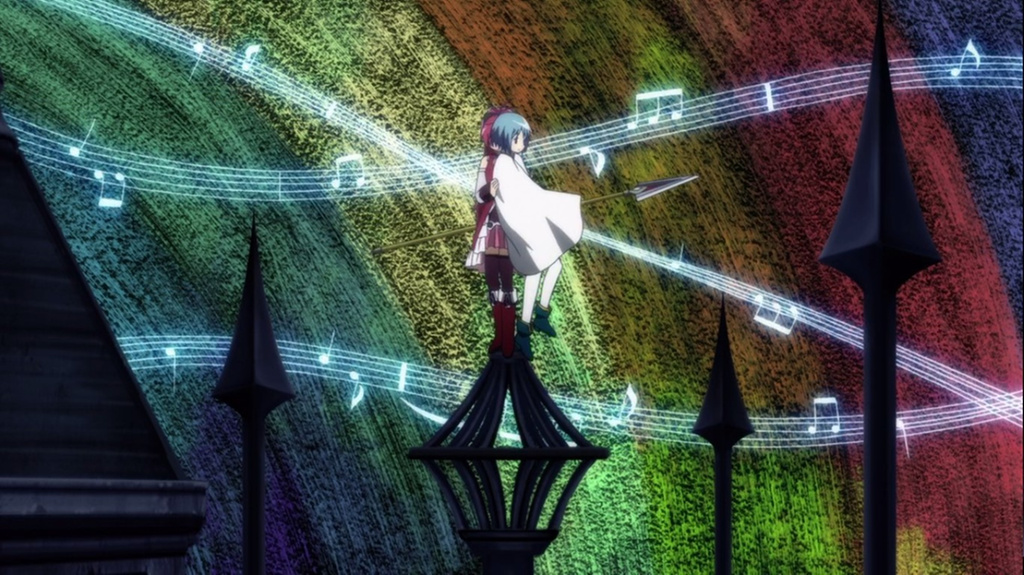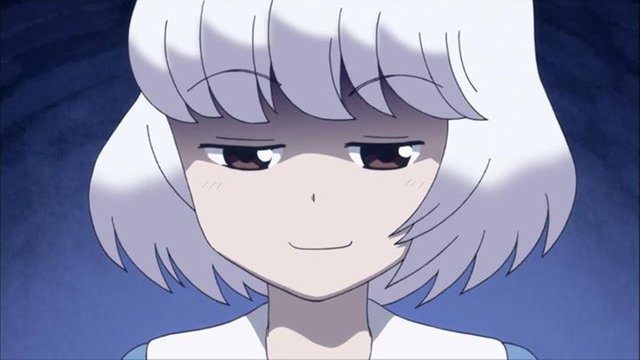Representations of Yuri Bonds in Puella Magi Madoka Magica
In anime, yuri discourse has only recently become a large topic of interest within the industry and the further audience. Originating from the word “lily”, the term “yuri” refers to the content and genre involving love, romance, and/or sexual relations between females in manga, anime and related Japanese media. Since its popularisation in mainstream anime, yuri anime shows has been slowly developed to reflect issues of homosociality and female bonds through the representations of female bonds and soft yuri. An example to which this discourse is prevalent is SHAFT Studio’s Puella Magi Madoka Magica anime of 2011.
As Shunyao Yu of The University of Finland describes in "Japanese anime and women's gender-role changing", Puella Magi Madoka Magica “tells a story of a group of female middle school students who choose to become magical girls and battle with surreal enemies called witches”. According to the anime show’s profile page on MyAnimeList, it is labelled and generally identified by audiences as a “drama, magic, psychological thriller”. However, amongst the further fanbase community, audience and academics, the anime has been argued to display deeper themes of yuri with homosexual-romantic implied relationships between the female characters and how the implications of those relationships relate to despair. Furthermore, Puella Magi Madoka Magica deconstructs the magical girl genre as a whole to comment further on the status of women, gender equality and gender roles through the usage of representations of female bonds and soft yuri. The implications of the meaning of the aforementioned issues display relevance to modern day society and its progression and attitudes towards women as well as homosexual female-female relationships. Other issues in the anime that relate to yuri discourse involve women’s utopia and how the concept of despair within the narrative demonstrates homosexual female-female relationships within the real world.

Throughout the majority of the Puella Magi Madoka Magica’s narrative, the main character and protagonist, Kaname Madoka has numerous encounters and interactions with Akemi Homura, who continuously tries to avoid Madoka from forming a contract with Kyubey and becoming a magical girl that will eventually lead to her demise. At the climax of the series, it is revealed that Homura has repeatedly travelled back to the moment she met Madoka through her magic powers in order to complete her resolve. Through Homura’s strong dedication and will to continue with her mission implies to the audience that her relationship with Madoka is more than a heterosexual friendship. This is further emphasised through the dialogue:
Each time I repeat all of this, the time you and I lived grows further apart--our feelings grow further apart, and my words stop reaching you. I think I lost myself a long time ago.
Episode 11: 最後に残った道しるべ /The Only Signpost Remaining
While on the surface, Homura refers to her message to Madoka not to become a magical girl, instead, it contains a deeper meaning of love that was unreciprocated by Madoka as a consequence of Homura’s constant time travelling. However, regardless of this, Homura continues to create new time cycles and redo her work all for Madoka’s sake despite not receiving any reward and constantly failing her goal instead. Madoka only reciprocates her feelings to Homura when she has a last act of self sacrifice of saving her life with her last remaining grief seed. Although, this only occurs in one of the time cycles. Furthermore, Homura declares her love for Madoka as evident in the dialogue:
My desire to save you: the first emotion I had that started this all. And now that I've come this far, the only star left that will help guide my way... You don't have to understand. My words don't have to resonate within you. But still, I beg you. Let me protect you.
Episode 11: 最後に残った道しるべ /The Only Signpost Remaining
Although it is only one-sided, this is a sign of unconditional love which is often described as “pure” and hence serves relevant to yuri discourse as yuri is regarded as pure love, stemming from its origin of name, lily. The soft yuri has also been interpreted by the voice actress of Madoka, Aoi Yuki, in which she has stated in the Episode 11’s audio commentary that the scene to which Homura confesses her love to Madoka was filled with great emotions and Aoi Yuki believes that Madoka would have accepted Homura’s feelings.
Madoka and Homura’s female bond and relationship displays another theme within the yuri discourse — women’s utopia. Throughout the story, homosociality is evident as no one questions or notices Madoka and Homura’s intimate relationship, particularly in the timelines to which Madoka and Homura are mutually in a relationship and close. However, there still some suggestions that female-female sexual relationships may not be accepted within mainstream society. This is evident through Madoka and Homura’s exchange:
How about the two of us become monsters and really mess up this whole awful world, huh? Until theres no more evil, no more sadness, nothing left at all…Let's just break, break, break it all to dust…!
Episode 10: もう誰にも頼らない / I Won’t Depend on Anyone Anymore
This dialogue transfers over greatly to the real modern society in which, homosexual female-female relationships have only recently started gaining acceptance within the majority of society, however, still continue to suffer from prejudice from a minority of the public. Homura’s reference of Madoka and herself becoming “monsters” alludes to the negative stigma that people from the Lesbian Gay Bisexual Transgender (LGBT) community have endured for many years, with those who have discriminated against LGBT, especially homosexual female-female relationships as a part of “this whole awful world”. Women’s utopia, especially for homosexual female-female relationships are also evident through the representations of soft yuri visual images in Episode 12 (わたしの、最高の友達/My Best Friend). As Madoka transforms into a higher being and continues to exist beyond Earth and into space, Homura yells in sadness because of Madoka’s farewell. Madoka then appears to her and consoles her that they will meet again. In the TV broadcast of the episode, both Madoka and Homura are not visibly clothed with their bodies being covered only by radiant white light, implying that they may possibly be nude. However, in the Blu-Ray version, they are both visibly nude. As Madoka embraces Homura in her chest, this visual image of soft yuri demonstrates women’s utopia and how it is still not achievable on Earth and in the modern day world, and that instead, it can only exist beyond the boundaries of Earth. During the scene, lilies are constantly shown floating and falling around Madoka and Homura. Through this, it is evident of the soft yuri tones due to the origin of the term “yuri” from “lily”. Furthermore, the mentioning of “no more evil, no more sadness” (Episode 10: もう誰にも頼らない / I Won’t Depend on Anyone Anymore) represents women’s utopia involving a world in which homosexual female-female relationships can exist peacefully without hardships and discrimination. This reference to women’s utopia can also be extended to women in general, who have suffered from gender inequality.

Fan analysis and discussion of Episode 11 and 12 with comparison of TV and Blu-Ray versions.
The relationship of Sayaka Miki and Kyoko Sakura also contains evidence of representations of female bonds and themes of soft yuri to yuri discourse. Initially, Kyoko acts cold towards Sayaka due to her rogue and rebellious personality. However, throughout the course of the Puella Magi Madoka Magica narrative, Kyoko grows to like Sayaka, with many fans believing that her feelings have developed to romantic feelings. This is confirmed in Episode 9 (そんなの、あたしが許さない/I’ll Never Allow That) when Kyoko sacrifices her own life and chooses to die with Sayaka who has turned into a witch. This “Yuri Tragedy” ending to allude to women’s utopia, however, not in the same way as the women’s utopia identified within Madoka and Homura’s relationship previously mentioned.

For Kyoko and Sayaka, women’s utopia is a result of their wanting escape from their living life. Sayaka had continually been in a one-sided relationship with a secondary male character, Kyosuke who hurts her when he chooses another girl to be in a relationship with. The rejection destroys Sayaka and breaks her heart causing her to fall into despair. This negation from a heterosexual relationship may be interpreted to push Sayaka into a homosexual female-female relationship, with Kyoko. On the other hand, women’s utopia in the perspective of Kyoko is a result from her despair as she watches Sayaka fall into despair, predominantly as it enables Kyoko to realise her true feelings for Sayaka. Sayaka reminded Kyoko why she became a magical girl in the first place and that both of them had a few things in common. Both characters love stores where love and courage prevail. This leads to her ultimate demise where she commits suicide to be together with Sayaka for eternity. This ending for Kyoko is an example of women’s utopia relating to yuri fantasy because for Kyoko, would rather be in death with Sayaka than live in a world to which Sayaka does not exist. Themes of soft yuri is also evident in their relationship. In an alternate timeline created by Homura, Kyoko’s feelings for Sayaka is emphasised when she says:
She didn’t have to let herself vanish like just for some boy she liked…! Idiot, just when we were starting to be close…
Episode 10 (もう誰にも頼らない / I Won’t Depend on Anyone Anymore)
This indicates that Kyoko’s romantic feelings for Sayaka, or can be interpreted that they were already in a homosexual female-female intimate relationship. Furthermore, it is also evident of their sexual/romantic relationship in the movie Rebellion Story where Kyoko and Sayaka are living together.
As far as the magical girl trope in anime is concerned, Puella Magi Madoka Magica was able to singlehandedly deconstruct the entire genre into becoming a very relevant medium to demonstrate the pressing issues regarding the yuri discourse such as women's utopia, gender roles and the status of women through its representations of soft yuri.
For further reading, I recommend Shunyao Yu's article regarding women's gender-role changing in Japanese animation, and albeit a fan Wikipedia page, the fanbase for Puella Magi Madoka Magica have extensively discussed the yuri undertones of the anime.
Upboated!
